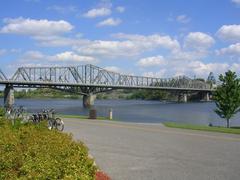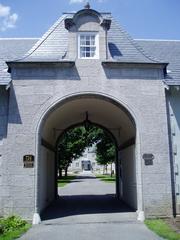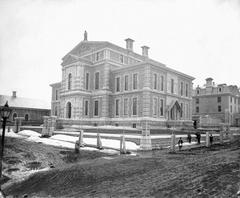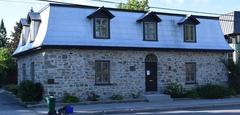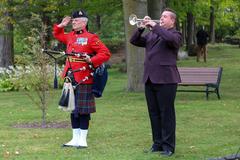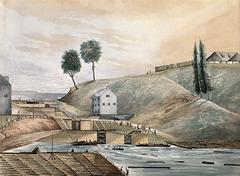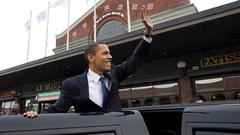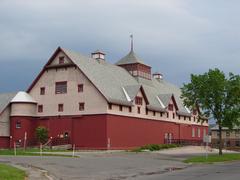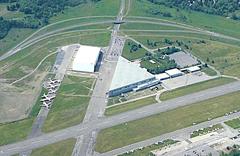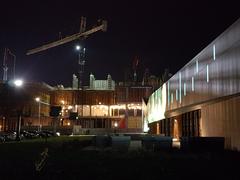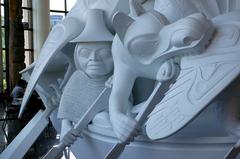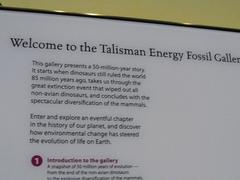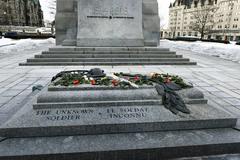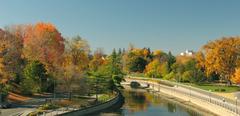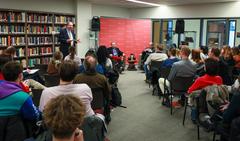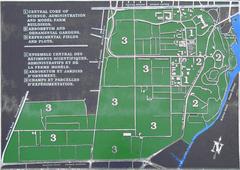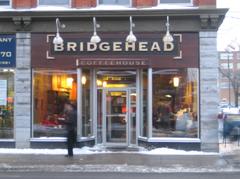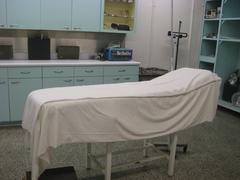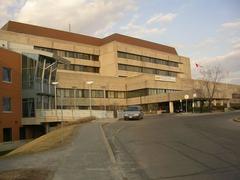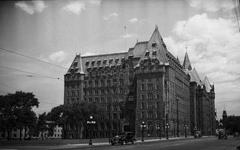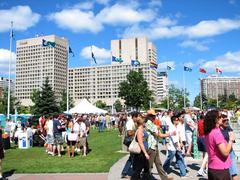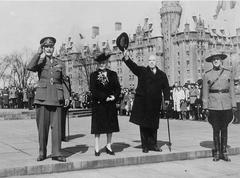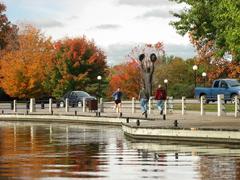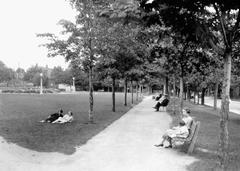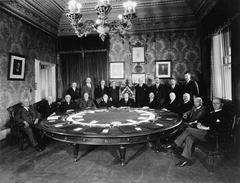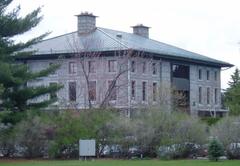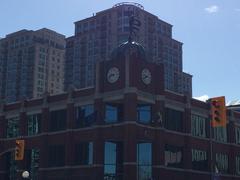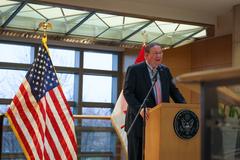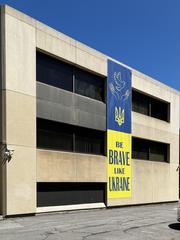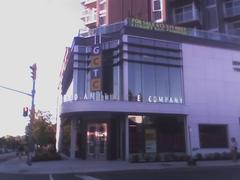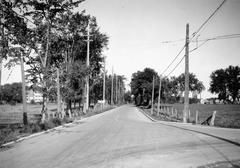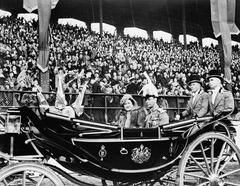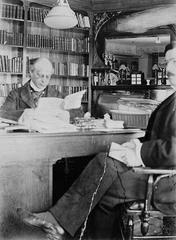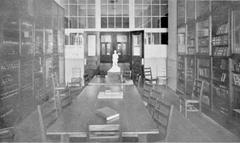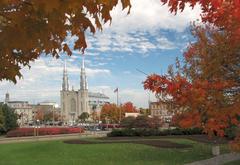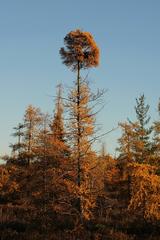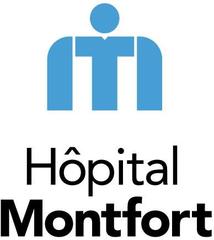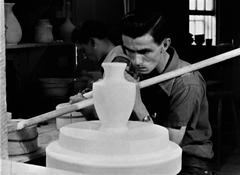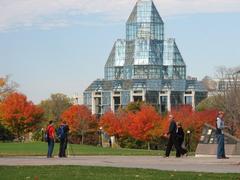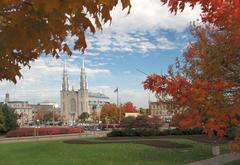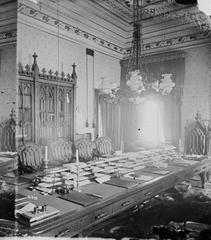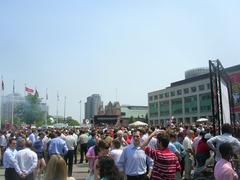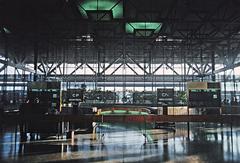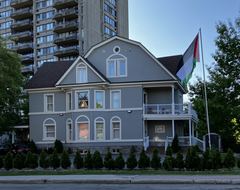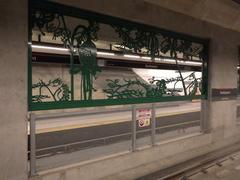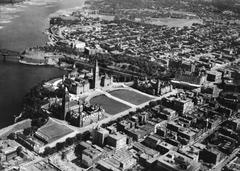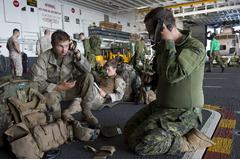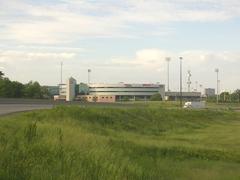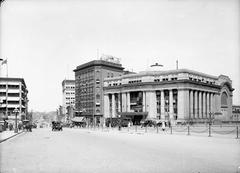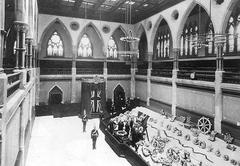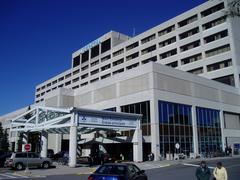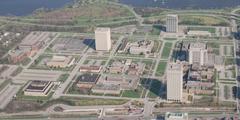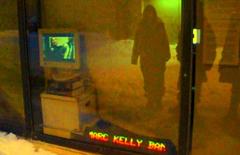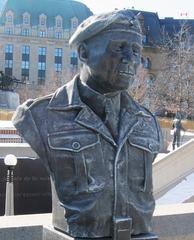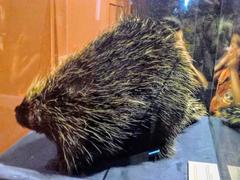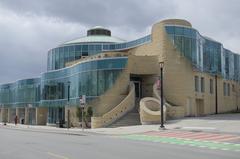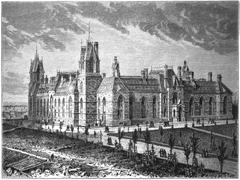
Champlain Bridge Ottawa: Visiting Hours, Tickets, and Historical Sites Guide
Date: 04/07/2025
Introduction
The Champlain Bridge in Ottawa stands as a vital landmark that unites Ontario and Quebec over the Ottawa River. More than a functional crossing, it represents the city’s layered history, multicultural heritage, and ongoing urban development. Named after Samuel de Champlain, the famed French explorer who navigated this river in 1613, the bridge celebrates centuries of Indigenous presence and European exploration (Canadian Heritage; localhistories.org).
Originally constructed in the 1920s to meet the needs of a growing population and economy, the bridge has played a central role in the integration of Ottawa and neighboring Gatineau (Kitchissippi Museum; ottawa-future.com). Today, Champlain Bridge is not only essential infrastructure but also a destination for scenic walks, cycling, outdoor recreation, and photography, with easy access to parks such as Bate Island and the Ottawa River Pathway (Ottawa Tourism).
This comprehensive guide covers everything you need to know about visiting the Champlain Bridge: history, cultural context, practical travel tips, accessibility, nearby attractions, events, and more.
Table of Contents
- Introduction
- Historical Overview
- Urban Development and Community Impact
- Engineering and Modernization
- The Champlain Bridge Today
- Visitor Information and Travel Tips
- Cultural and Heritage Significance
- Preservation and Future Prospects
- Frequently Asked Questions (FAQ)
- Conclusion
- Sources and Further Reading
1. Historical Overview
Early Transportation and the Ottawa River
The Ottawa River has long been a crucial corridor for transportation and trade. Indigenous peoples, including the Algonquin and Ottawa (Outaouais) nations, used the river for thousands of years before European arrival. The river’s role as a trade and travel route set the stage for future infrastructure, including bridges connecting the communities on both banks (localhistories.org).
Samuel de Champlain’s 1613 exploration marked the beginning of European influence in the region, and the river soon became a key artery for commerce, settlement, and communication.
Ottawa’s Growth and the Need for a Bridge
By the late 19th and early 20th centuries, Ottawa’s booming timber and fur trades, burgeoning government sector, and the rise of new industries increased movement between Ottawa and Hull (now Gatineau) (ottawa-future.com). Ferries and seasonal ice crossings were unreliable and sometimes hazardous, underscoring the need for a permanent, reliable year-round bridge.
Construction of the Champlain Bridge
Construction began in the early 1920s, and the bridge opened to traffic in 1928 (Kitchissippi Museum). Its steel truss and concrete pier design addressed the region’s harsh climate and river conditions. Archival records and photographs highlight the engineering challenges faced, such as flooding and the need to accommodate both vehicles and pedestrians.
2. Urban Development and Community Impact
The Champlain Bridge was pivotal in spurring residential and commercial growth in Ottawa neighborhoods like Westboro and Britannia, and the Aylmer sector on the Quebec side. It enabled cross-provincial commuting and fostered economic integration (ottawa-future.com). The bridge also played a role during emergencies, such as the Hull-Ottawa fire of 1900, and supported the region’s economy during the Great Depression and postwar years.
3. Engineering and Modernization
The bridge’s robust steel truss construction has stood the test of time, with periodic maintenance and modernization projects ensuring continued safety and relevance (Kitchissippi Museum). Recent renovations have upgraded the bridge to support today’s traffic levels and maintain accessibility for vehicles, cyclists, and pedestrians. Dedicated cycling and pedestrian lanes reflect Ottawa’s commitment to sustainable and inclusive urban mobility.
4. The Champlain Bridge Today
Currently, the Champlain Bridge carries thousands of vehicles daily and is managed by municipal and federal authorities. It is integrated with the Capital Pathway network, providing seamless connections for cyclists and pedestrians. The area around the bridge, including Bate Island, offers green spaces, river access, and recreational opportunities (Ottawa Tourism).
5. Visitor Information and Travel Tips
Access and Transportation
- Open 24/7: The bridge is accessible at all hours for vehicles, cyclists, and pedestrians.
- No Tickets or Fees: There are no tolls or entry fees for the bridge or Bate Island. Parking on Bate Island is also free.
- Getting There: The bridge connects Island Park Drive in Ottawa with Boulevard Alexandre-Taché in Gatineau. It is served by public transit (OC Transpo and STO buses), and connected to major cycling and walking routes (Ottawa Tourism).
- Parking: Free parking is available on Bate Island (note that spaces may be limited during special events).
- Accessibility: Wheelchair-accessible pathways and gentle slopes accommodate visitors with mobility challenges.
Best Times to Visit
- Spring through Autumn: Ideal for outdoor activities, scenic walks, and photography.
- Early Morning/Evening: Offers cooler temperatures, fewer crowds, and the best natural light for photos.
- Winter: The bridge remains open, but pathways may be icy—dress appropriately and check conditions.
Safety
- Use designated pedestrian and cycling lanes.
- Observe speed limits and traffic signals.
- Be cautious during rush hour and in winter conditions.
6. Cultural and Heritage Significance
The bridge is named for Samuel de Champlain, whose explorations contributed significantly to the region’s history. A prominent monument to Champlain stands nearby at Kìwekì Point (formerly Nepean Point), emphasizing the ongoing importance of the Ottawa River as a cultural and historical corridor (Canadian Heritage).
As a symbol of interprovincial connection, the bridge embodies Ottawa’s bilingual, multicultural character. It frequently features in local art, events, and community gatherings.
7. Preservation and Future Prospects
Ongoing efforts ensure that the bridge’s structural integrity and historical character are preserved. Interpretive signage and public art enhance the visitor experience, while regular maintenance keeps the bridge safe and accessible (National Capital Commission).
8. Frequently Asked Questions (FAQ)
Q: Is the Champlain Bridge open to pedestrians and cyclists?
A: Yes, there are dedicated pathways for both.
Q: Are tickets required?
A: No, access is free for all users.
Q: What are the best times for photography?
A: Early mornings and evenings provide the best natural lighting.
Q: Is there parking available?
A: Free parking is available on Bate Island, but can fill up during major events.
Q: Are there guided tours?
A: While there are no official bridge tours, many city walking and cycling tours include viewpoints of the bridge.
9. Nearby Attractions and Activities
- Bate Island Park: Accessible from the bridge, with picnic areas, walking trails, and fishing spots (Curiocity).
- Gatineau Park: Features hiking, cycling, and scenic lookouts (todoCanada.ca).
- Capital Pathway Network: Provides extensive walking and cycling routes.
- Westboro Beach and Aylmer: Neighborhoods with local eateries and riverfront promenades.
- Whitewater Activities: In spring, the rapids near the bridge attract kayakers and surfers (Ottawa Tourism).
- Ottawa Festivals: The bridge area offers great vantage points for Canada Day fireworks and other events (todoCanada.ca).
10. Tips for a Memorable Visit
- Plan your visit during sunrise or sunset for the best views.
- Bring water, snacks, and appropriate clothing for the season.
- Respect the environment: pack out litter, stay on marked paths, and respect wildlife.
- Dogs are welcome but must be leashed.
- For a full-day outing, combine your visit with nearby parks or cycling routes.
- Download the Audiala app for digital maps, guided tours, and event alerts.
11. Conclusion
Champlain Bridge is more than a river crossing—it is a living symbol of Ottawa’s heritage, community, and natural beauty. With year-round access, no fees, and abundant recreational opportunities, it offers something for everyone. Whether you are drawn by its history, its views, or its role in connecting two provinces, the Champlain Bridge remains an essential part of Ottawa’s landscape.
Sources and Further Reading
- Kitchissippi Museum - The 1920s Champlain Bridge Construction
- Ottawa Tourism - Epic Whitewater Adventures Ottawa River
- National Capital Commission - Champlain Bridge
- todoCanada.ca - 15 Scenic Lookouts in and Around Ottawa
- localhistories.org - A History of Ottawa
- ottawa-future.com - A Brief Overview of Ottawa’s History
- Canadian Heritage - Samuel de Champlain Monument
- Wikipedia - Champlain Bridge (Ottawa)
- Ottawa Citizen - Champlain Bridge Renovations
- Curiocity - Bate Island Park
- Life On The Roam - Outdoor Activities Ottawa
- The Travel Pub - Visit Ottawa
- Archyde - Cultural Events
- Tiny Footsteps Travel - Ottawa Itinerary
- Project Local Love - Ottawa Summer Festivals & Events
Images and interactive maps are recommended for an enriched visit. For the latest updates, check official Ottawa tourism resources.


